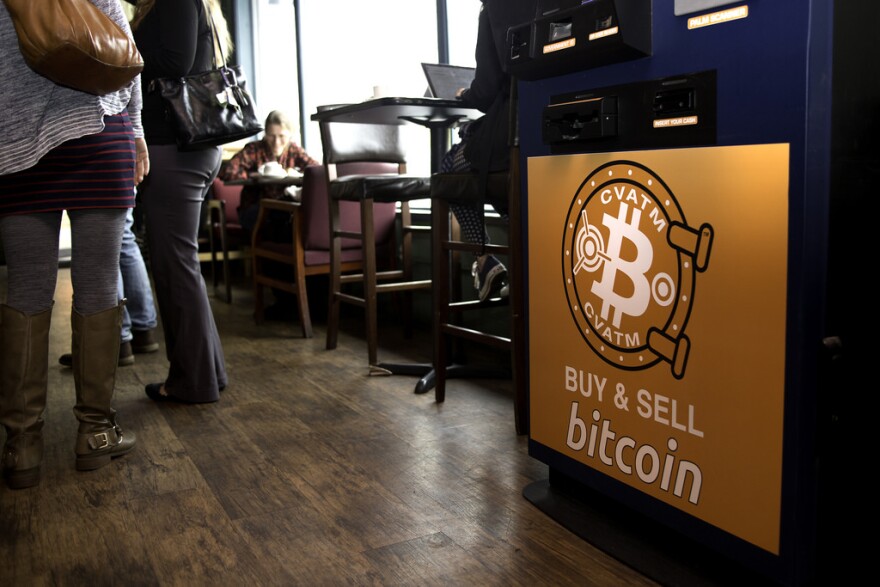It’s 2018. Blockchain is here, opioids have caused a national emergency, and those two things have more to do with each other than you’d think.
Some companies think the answer to the U.S. drug epidemic is blockchain. But to explain why blockchain technology has anything to do with health care (at this point it’s mostly associated with digital money), you’ve got to understand what a blockchain is. KUT is here to help.
“A lot of times people will say that blockchain is like the internet, but the thing is, it’s not like that at all,” says Tiana Laurence, author of Blockchain for Dummies.
A 'Distributed Ledger'
A KUT editor jokingly asked recently: Isn’t blockchain like that 4chan thing? Um, no. 4chan is a website with anonymous forums where users share pictures and messages. Blockchain is not a website. It’s not a new internet, and it’s not the deep-web either.
When Laurence explains that blockchain is not the internet, what she means is that blockchain is more like computer software used like a shared spreadsheet or account book. It’s a way to keep track of anything from money to identity documents like birth certificates.
But the document keeping track isn’t just a file on your computer; it’s a shared document. In blockchain-speak, it’s a “distributed ledger.”
A ledger is like one of those heavy books accountants used to log all of a company’s financial transactions. When the internet came along, the ledgers were replaced by electronic systems like Excel spreadsheets.
And accountants are no longer the only ones who control what goes into a ledger. That’s the “distributed” part: Anybody who joins a public blockchain network can participate in it. That’s why a lot of blockchain devotees advocate for this technology: It’s based on a peer-to-peer network that cuts out the middleman. No more banks or lawyers. Blockchain is now the intermediary.
How It Works
In every blockchain, each block contains some data. In the case of Bitcoin, the data is the sender’s information, the receiver’s information and the amount of digital tokens being transferred. If you want to use it to store your documents, then you would scan a copy of your birth certificate, for example, and enter that into a block.
Every time new data is entered – be it an amount of tokens or a Social Security number – a fixed-length set of characters called a “hash” is created. This is like the block’s unique fingerprint. Any changes or edits made to the block will create a new block and form a chain.
For people who are mainly interested in using the technology for investing, blockchain allows them to transact directly. Companies like Walmart are using it to track their products. And others want to use the technology to transform the health care industry.
As communities in the U.S. grapple with the opioid epidemic, states have started mandating that doctors e-prescribe controlled substances to prevent abuse.
“We’re trying to create an ecosystem that is very patient-centric, so they have much more information and better communication with their health care providers than they currently have,” said Michael Brunner, the founder and CEO of the Austin-based startup BlockMedx.
The technology can help health care professionals reduce medical fraud and overprescription by providing open and transparent medical records. Ultimately, many in the health care industry hope, that in turn could lead to fewer opioid deaths.
BlockMedx is one of 94 companies in the Austin area alone using blockchain. It plans to employ the technology to securely send prescriptions between physicians and pharmacies. Brunner said the company plans to launch its mobile app by the end of the summer and expand beyond the city by the end of the year.
Matt Cutler contributed to this post.


